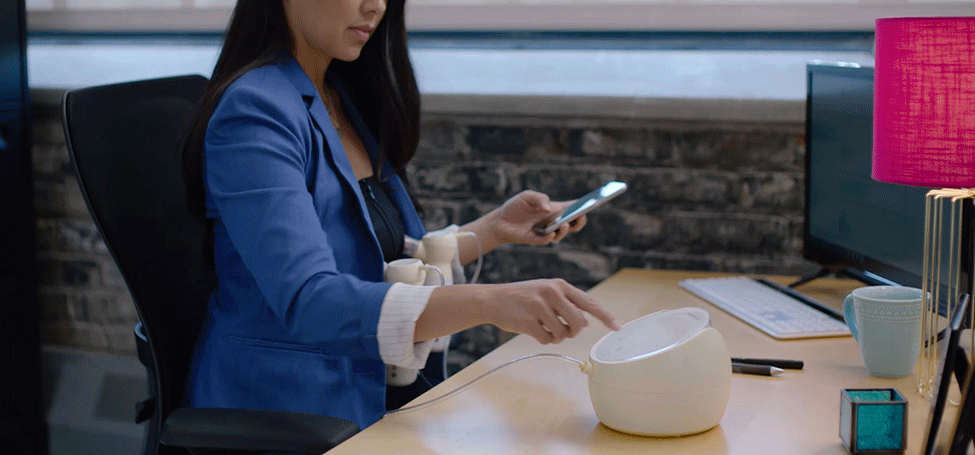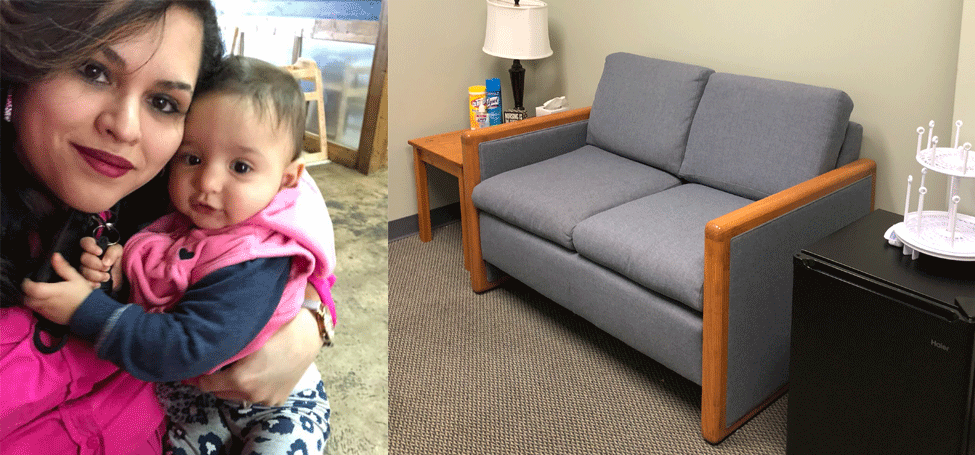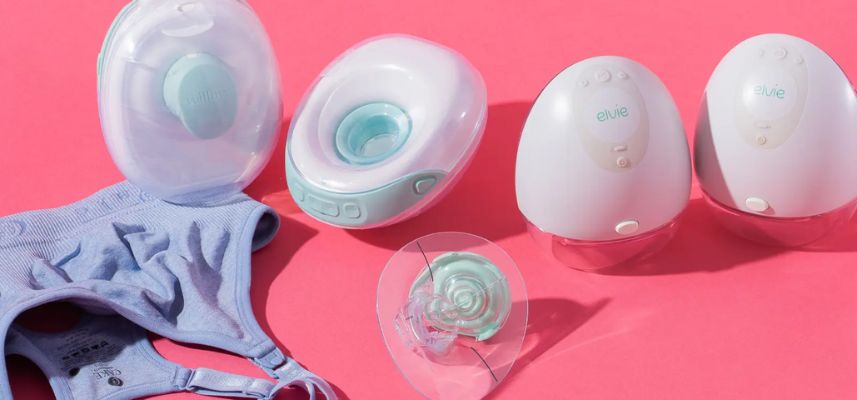One of the challenges with exclusively pumping breast milk is that you might not know anyone else who is feeding their baby the same way you are - breastfeeding, but using a bottle. It can be hard to know whether what you're experiencing is normal, or how to find ways to make exclusive pumping easier. Here are some common exclusive pumping questions.
How often should I pump if exclusively pumping?
This depends on the age of your baby. With a newborn, you want to breast pump about as often as your baby eats, somewhere in the range of 8-12 times per day. Typical pumping sessions are 15-20 minutes long. As your baby gets older, and your breast milk supply is well established (around the 6-8 week mark), you can consider dropping a pumping session or two, and consolidate the amount of time that you spend pumping.
How much milk should I be producing if exclusively pumping?
According to a previous survey, the average daily output for exclusive pumpers was 30.9 oz per day. This is in line with previous research showing that the average breastfeeding women’s milk production is between 24-34 oz per day. However, keep in mind that milk volumes may vary woman to woman.Some women make only a few ounces of breast milk per day, while others who have a breast milk oversupply may pump 100+ oz. per day.
How can I make exclusive pumping easier?
The most important thing that you can do to make exclusive pumping easier is use a hands-free pumping bra. When you have to dedicate so much time to pumping, it's key to be able to do something else while pumping whether it’s feeding your baby, eating dinner or a snack, or working on a laptop. The other thing that I would suggest is getting into a routine. Maybe on Mondays and Thursdays, you freeze extra breast milk, while on Fridays, you feed frozen milk to make sure the oldest milk gets used up. Figure out a system that works for you! If you are exclusively pumping it’s also important to make sure that you use a high quality double electric breast pump with appropriate suction/vacuum setting and properly fitting flanges. Using an old breast pump, or one that is not properly fitted, can making pumping sessions take a lot longer than they should.
What should I do if I'm not pumping enough milk?
Many exclusively pumping moms produce just enough breast milk to feed their babies. But if your doctor or lactation professional confirms you are not producing enough, there are many strategies that you can try, including herbal galactogogues, eating oatmeal, power pumping, and/or trying certain prescription medications. Please see our previous post that includes ideas for multiple ways to increase your breast milk supply.
The first thing to do is to look at your pumping schedule and make sure that you're pumping frequently enough(about as often as your baby eats)and not skipping pumping sessions. You can also try doing breast compressions and gentle massage to increase your output when you pump. Being near your baby, or looking at photos or videos of your baby as you pump, can also help you to make more milk by increasing levels of hormones that are needed for breast milk production. If you determine that you are pumping often enough, and that there is not a mechanical problem with your breast pump, you can consider the methods to increase milk supply listed above (galactogogues, dietary changes, and/or power pumping).
Why do I get more milk from one side?
It's totally normal to get more milk from one breast during both breastfeeding and pumping. This may occur because you have more working milk ducts on one side, because you favored doing breast compressions on one side in the past, or because your baby preferred to nurse from one side before you started exclusively pumping. If the asymmetry bothers you, you can try pumping more from the "lazy" side (this may or may not work to increase supply). If your main concern is a lopsided appearance of your breasts, you can use a few extra breast pads on the smaller side.
How should I clear a clogged duct while pumping?
The best way to clear a clogged duct is to pump on the affected side as much as possible, to promote full emptying of your breast. You can also use heat and gentle pressure as you try to work the clog out with your hands. Vibration can also help to relieve plugged ducts - you can use an electric toothbrush or a lactation massager for this purpose.
How will I ever be able to leave my house when I have to pump so often?
I would suggest getting comfortable with pumping in public. There are two keys to this - preparation and confidence. As far as preparation goes - pack your pump bag so everything's all set to go, assemble your pump parts and pump them in a Ziploc bag, and make sure you have your hands-free bra and nursing cover. Make a plan for where to pump when you are out and about.
For confidence, you want to start somewhere easy and “fake it” until you make it. Your car is an ideal first place to pump in public - say, if you're running errands and your baby falls asleep in the back seat - you can park, put your nursing cover on, and get a quick pumping session in without having to go home. Many electric breast pumps can be powered with adaptors that fit into power supplies in automobiles.
Pumping is painful - what should I do?
Breast pumping should never be painful. The first thing to check is your flange size - if your breast shields are either too big or too small, pain can occur. This chart should be helpful for seeing if yours fit correctly.
If you're confident your flange sizes are correct, it may be worth seeing your OB or a lactation consultant to evaluate whether you have thrush or another medical issue that may be causing you to have pain while pumping.
What do I do when it's time to stop pumping?
When you're ready to be done with exclusive pumping, you'll need to wean, just like you'd wean your baby if you were nursing. Basically what you want to do is drop one pumping session at a time until you're down to one session per day. Then you can slowly drop that last session (reducing the time or volume that you pump), and finish things off with a final pumping session 36-48 hours later. It is not suggested to stop pumping “cold turkey” due to a risk of pain, developing plugged ducts, and possible mastitis.
References
Flaherman VJ, Lee HC. "Breastfeeding" by feeding expressed mother's milk. Pediatr Clin North Am. 2013 Feb;60(1):227-46. doi: 10.1016/j.pcl.2012.10.003. PMID: 23178067; PMCID: PMC5332143.
Arthur PG, Hartmann PE, Smith M. Measurement of the milk intake of breast-fed infants. J Pediatr Gastroenterol Nutr. 1987 Sep-Oct;6(5):758-63. doi: 10.1097/00005176-198709000-00017. PMID: 3694369.
Becker GE, Smith HA, Cooney F. Methods of milk expression for lactating women. Cochrane Database Syst Rev. 2016 Sep 29;9(9):CD006170. doi: 10.1002/14651858.CD006170.pub5. PMID: 27684560; PMCID: PMC6457747.











